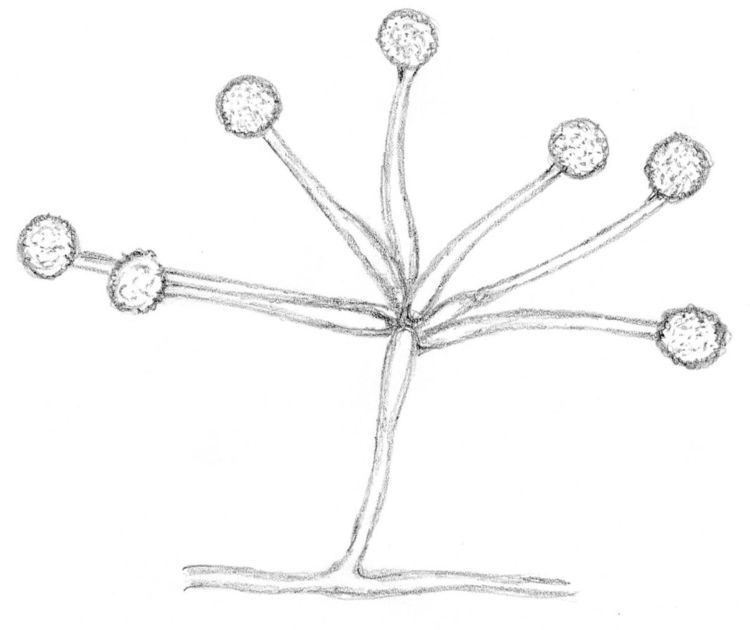Kingdom Fungi Subdivision Mucoromycotina Higher classification Mucorales | Division Zygomycota Scientific name Mortierellaceae Rank Family | |
 | ||
Similar Mortierella, Zygomycota, Mucorales, Mucoraceae, Saksenaea | ||
The Mortierellaceae are a family of fungi in the order Mortierellales. The family contains 6 genera and 93 species.
Contents
Brief Taxonomic History
Many genera have been included in this family. According to Fitzpatrick, the family contained Mortierella, Herpocladium, Dissophora, and Haplosporangium. Later, Herpocladium was removed and Aquamortierella added. Another genus, Echinosporangium, was later added. Currently, the family contains Mortierella, which may be paraphyletic compared to other genera, the bitypic (containing only two species) Dissophora and Modicella, and the monotypic (containing only one species) genera Aquamortirella, Lobosporangium, and Gamsiella. A new genus, Echinochlamydosporium, was described in 2011.
Morphology
Members of this family have coenocytic hyphae. Colonies tend to be white or off-white and are characterized by zonate growth—that is, growing in rings—and an onion or garlic smell. Single or multiple collumellate sporangia are born on aerial sporangiophores. Their distinctive zygospores may be enveloped by hyphae. They may be smooth or dimples but nearly all have apposed suspensors. This family also produces chlamydospores, which may be spiny or rough and thick-walled.
Mortierella
Mortierella is the most commonly encountered and well studied of the genera. Members of this genus typically are saprobes in soil, dung, and reproductive bodies of higher fungi, but there are facultative parasites. Isolates of Mortierella can be readily obtained from forest soils on Czapek agar, hay agar, or water agar. Members of this genus are thought to play significant roles in temperate forest ecosystems, though many are psychophiles (requiring cold temperatures for growth) and are likely overlooked in soil samples incubated at room temperature.
